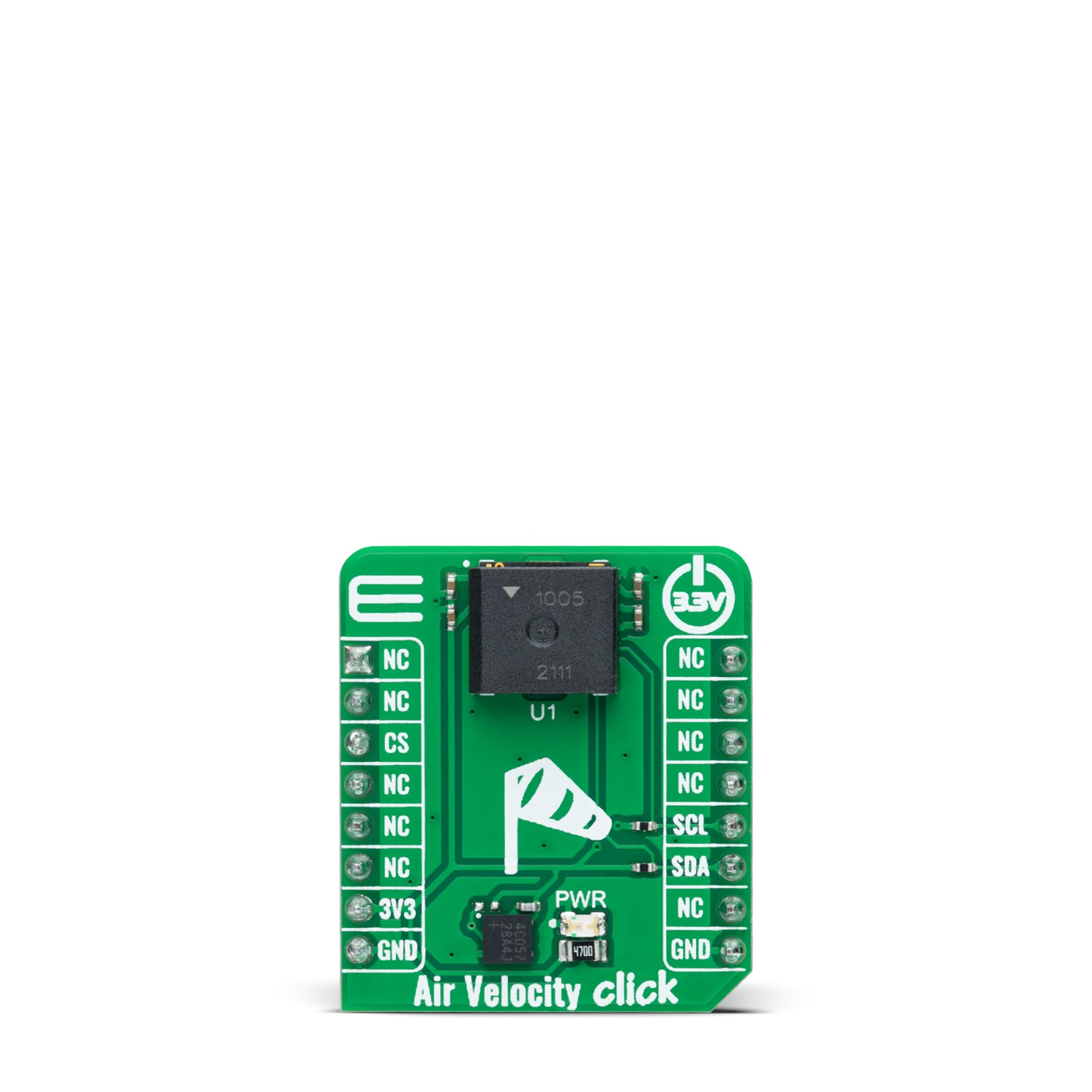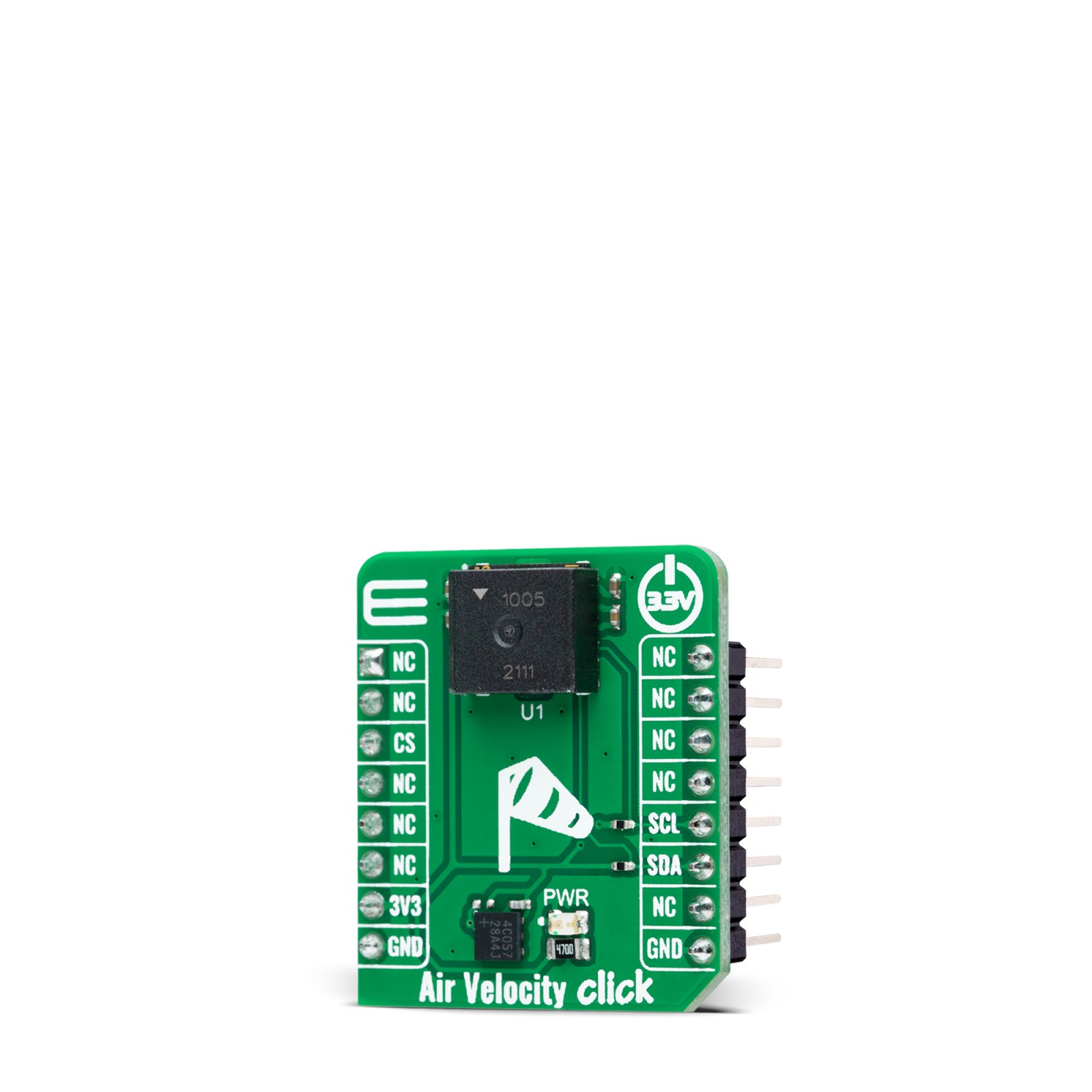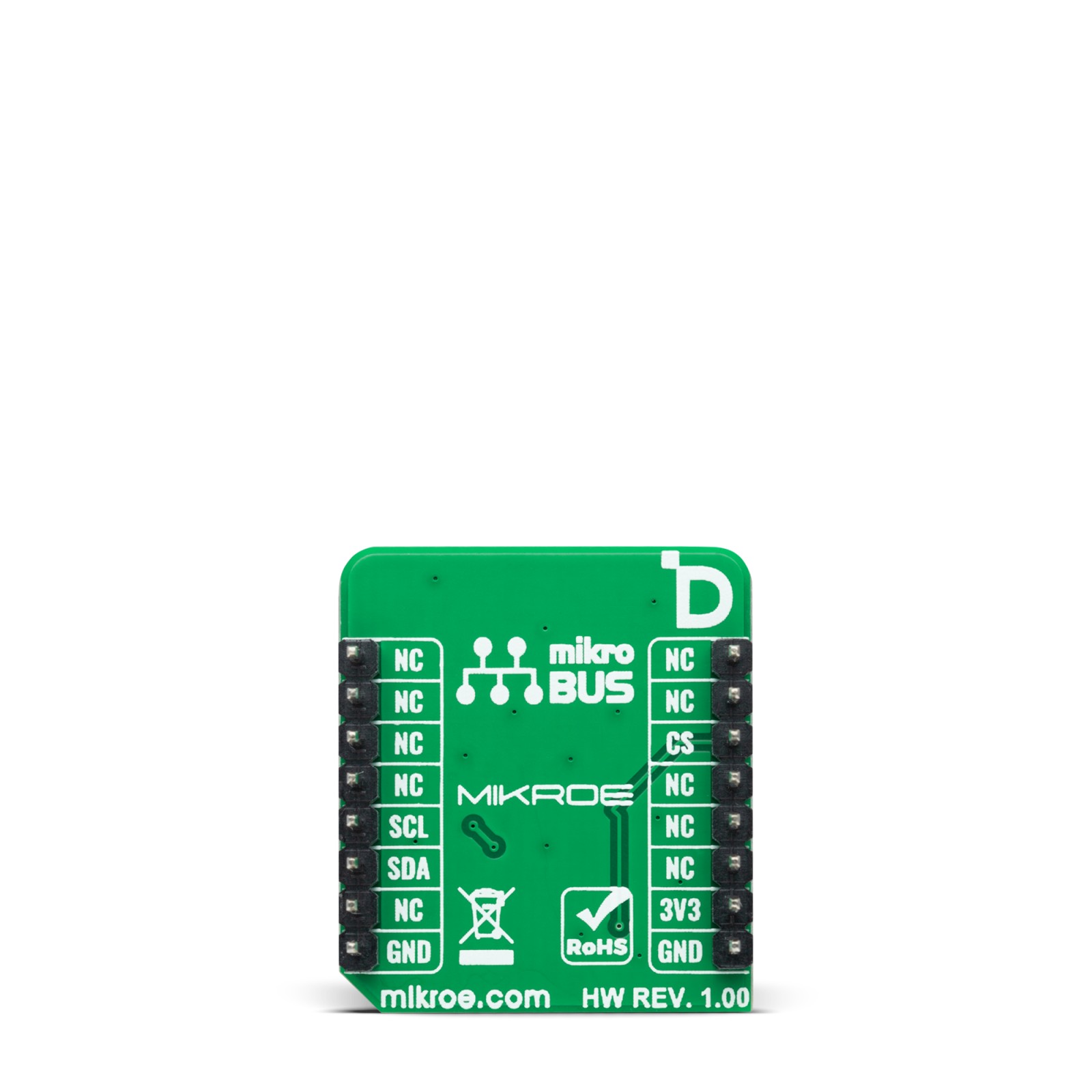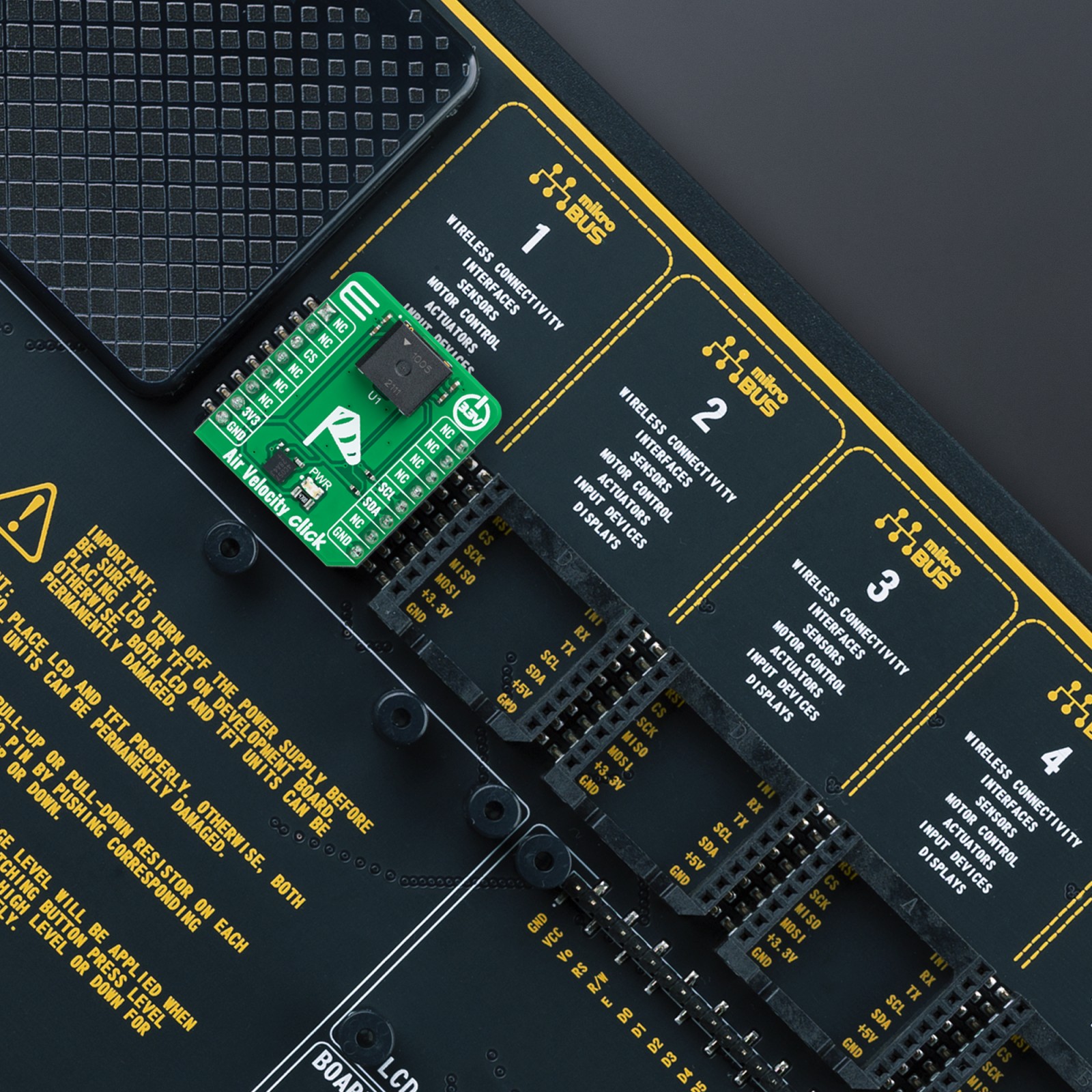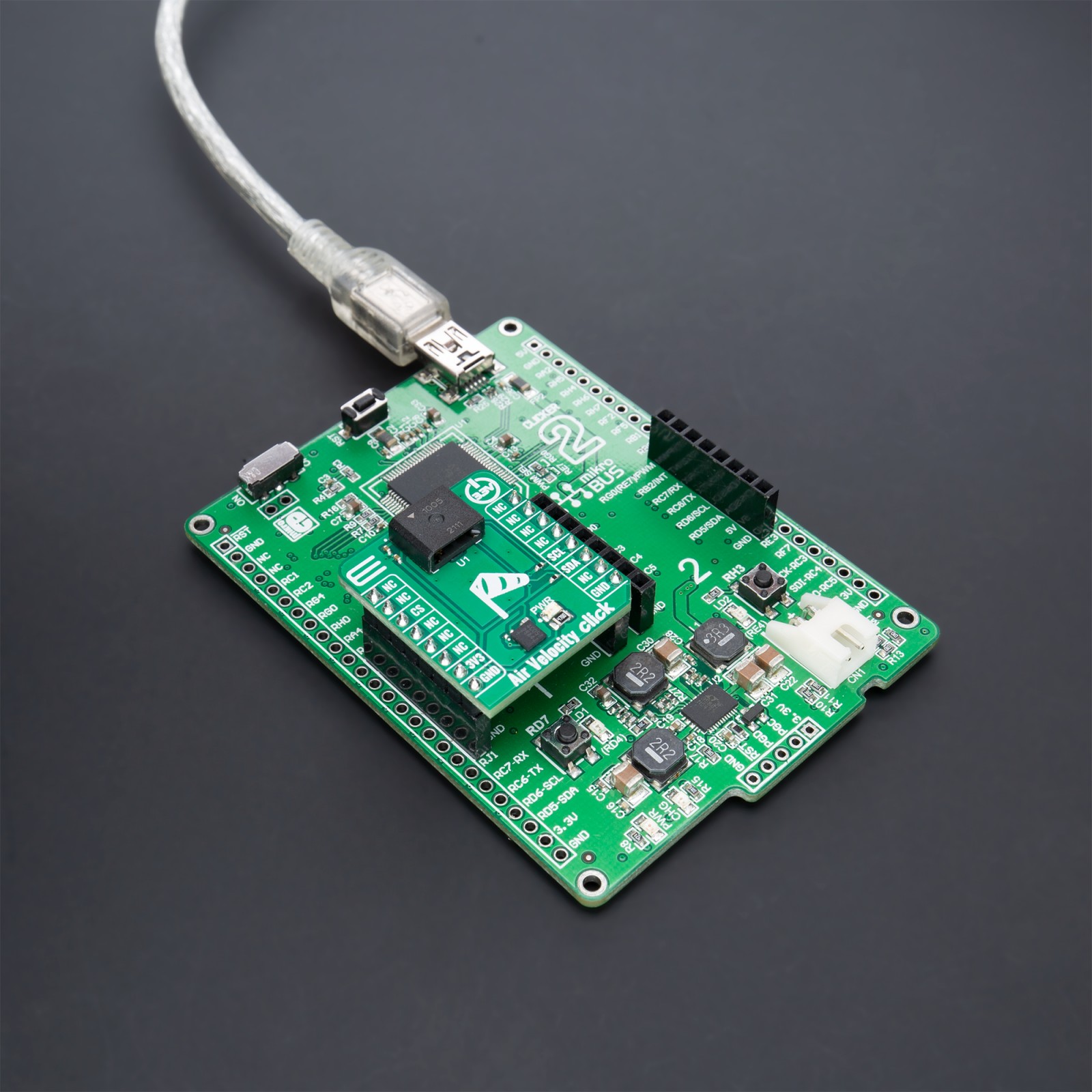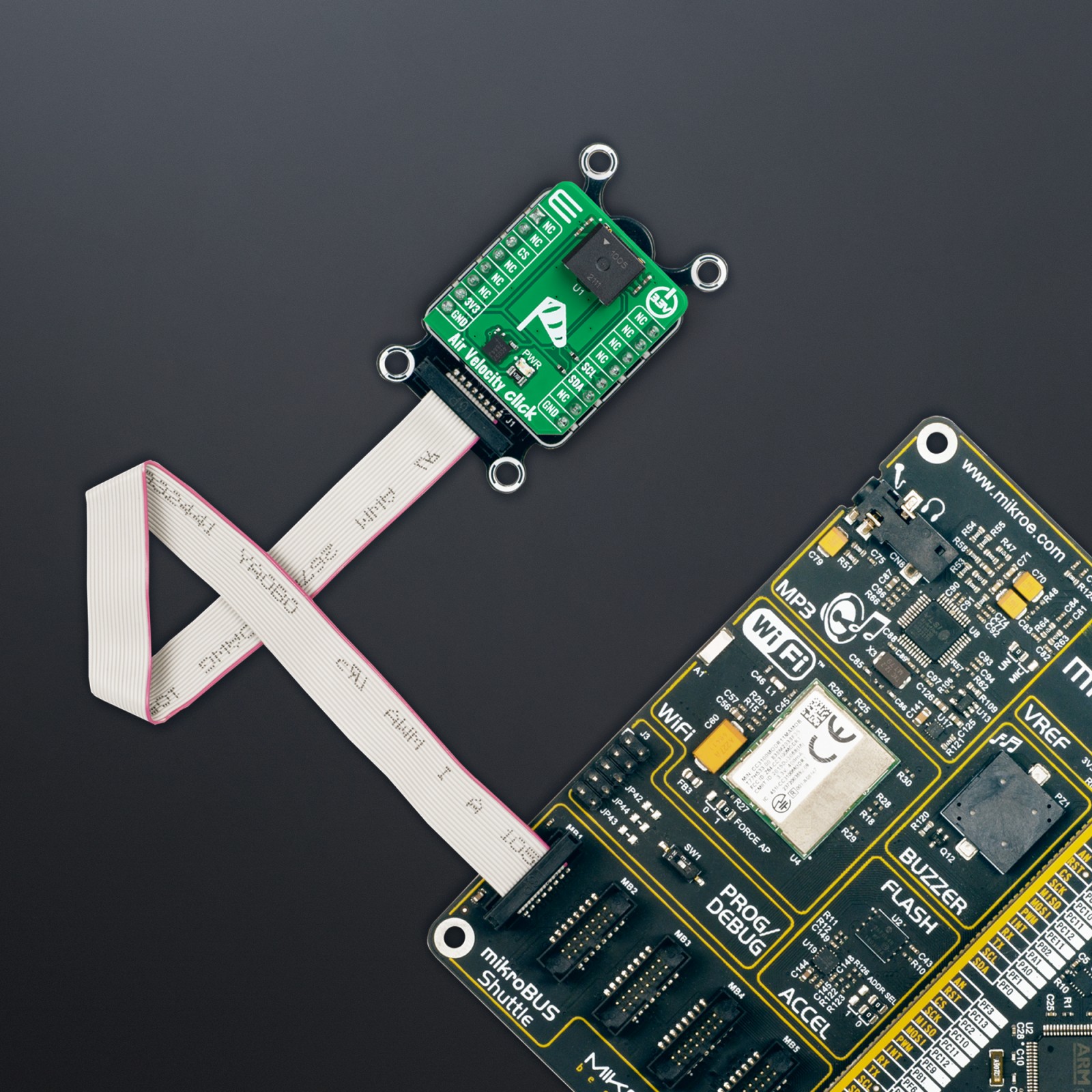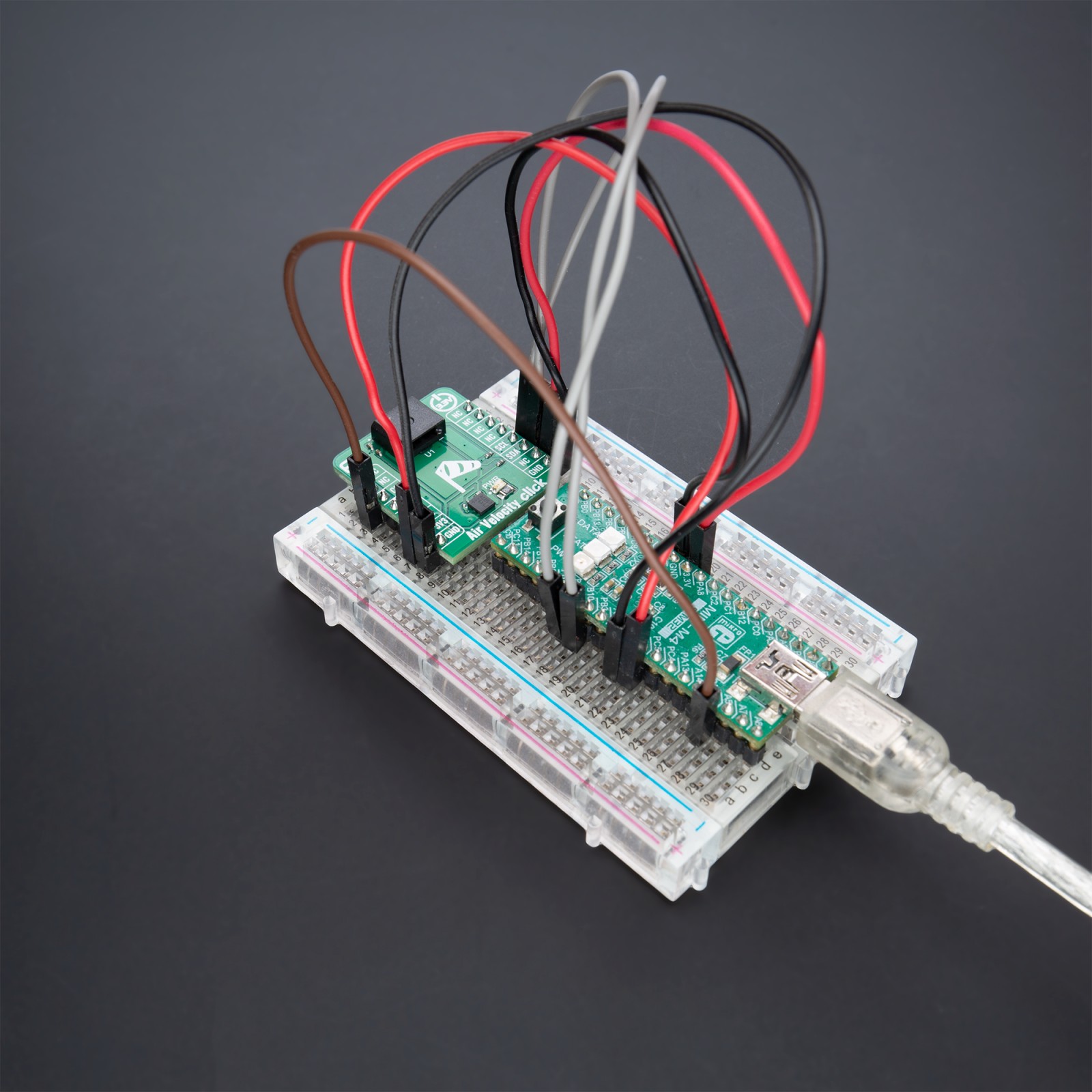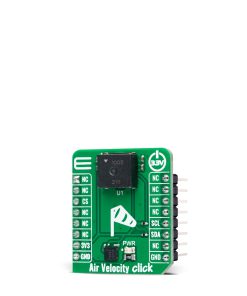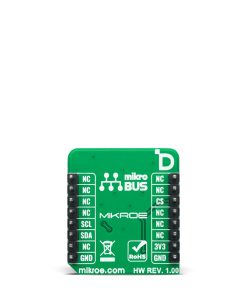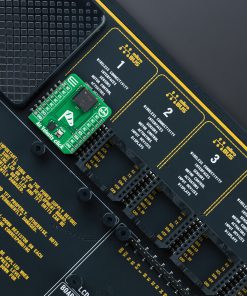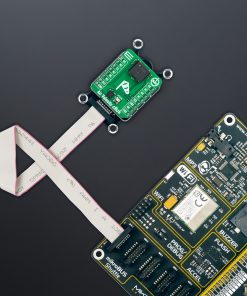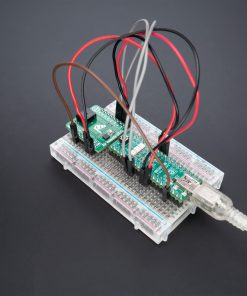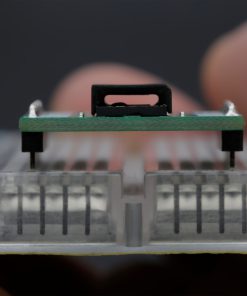Air Velocity Click
R1,300.00 ex. VAT
Air Velocity Click is a compact add-on board that measures direct airspeed. This board features the FS3000-1005, a surface-mount type air velocity module utilizing a MEMS thermopile-based sensor from Renesas. This I2C-configurable air velocity module features a digital output with a 12-bit resolution with a wide operational range of 0-7.2meter/second (0-16.2mph). The sensor comprises a “solid” thermal isolation technology and silicon-carbide coating to protect it from abrasive wear and water condensation. This Click board™ is suitable for air handling systems, HVAC, analytic gas monitoring systems, data centers, and air quality systems to detect failures in the fan or blower, fan speed control, or filter clogging.
Air Velocity Click is fully compatible with the mikroBUS™ socket and can be used on any host system supporting the mikroBUS™ standard. It comes with the mikroSDK open-source libraries, offering unparalleled flexibility for evaluation and customization. What sets this Click board™ apart is the groundbreaking ClickID feature, enabling your host system to seamlessly and automatically detect and identify this add-on board.
Stock: Lead-time applicable.
| 5+ | R1,235.00 |
| 10+ | R1,170.00 |
| 15+ | R1,105.00 |
| 20+ | R1,063.40 |

